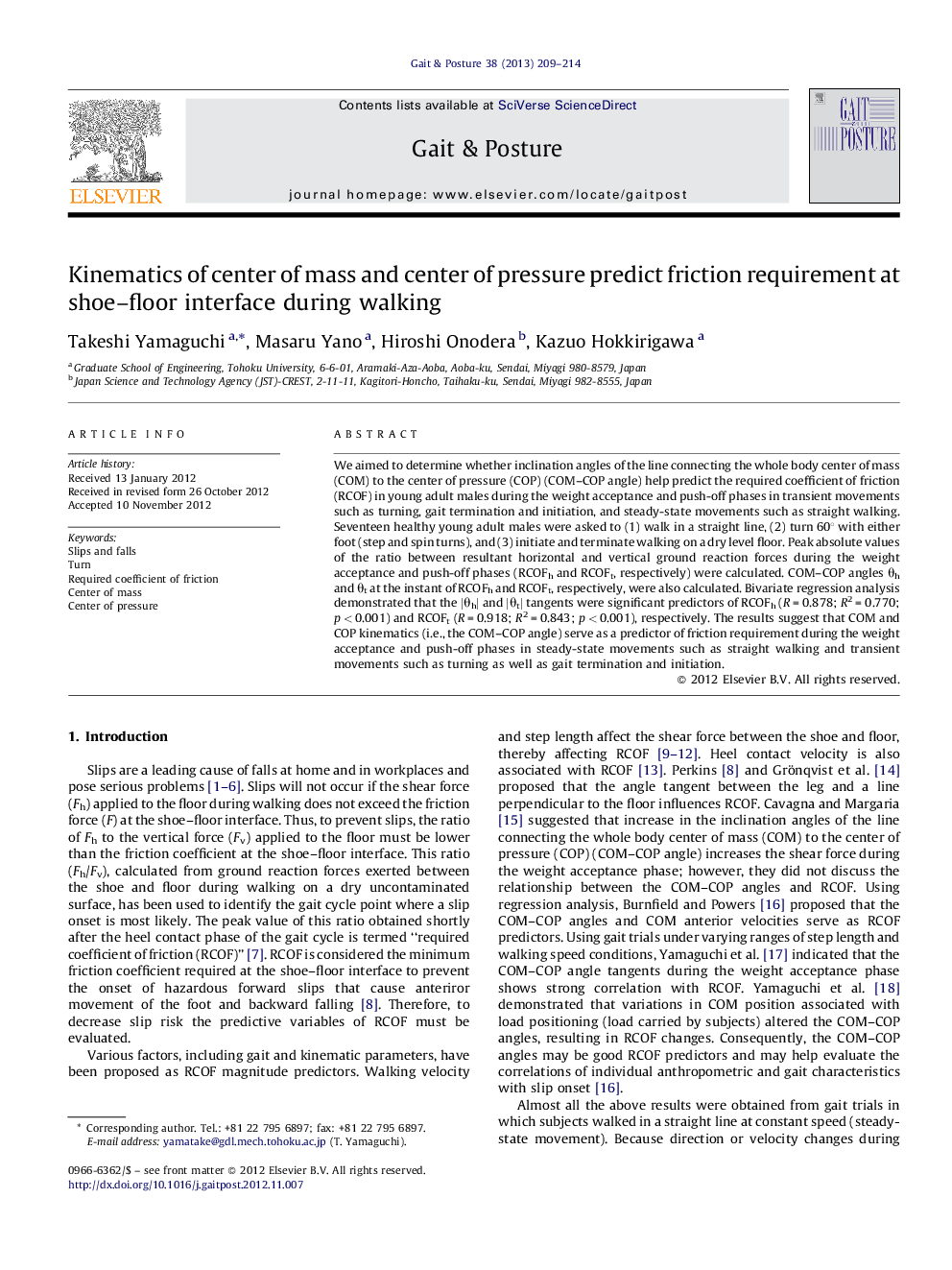| Article ID | Journal | Published Year | Pages | File Type |
|---|---|---|---|---|
| 6207320 | Gait & Posture | 2013 | 6 Pages |
We aimed to determine whether inclination angles of the line connecting the whole body center of mass (COM) to the center of pressure (COP) (COM-COP angle) help predict the required coefficient of friction (RCOF) in young adult males during the weight acceptance and push-off phases in transient movements such as turning, gait termination and initiation, and steady-state movements such as straight walking. Seventeen healthy young adult males were asked to (1) walk in a straight line, (2) turn 60° with either foot (step and spin turns), and (3) initiate and terminate walking on a dry level floor. Peak absolute values of the ratio between resultant horizontal and vertical ground reaction forces during the weight acceptance and push-off phases (RCOFh and RCOFt, respectively) were calculated. COM-COP angles θh and θt at the instant of RCOFh and RCOFt, respectively, were also calculated. Bivariate regression analysis demonstrated that the |θh| and |θt| tangents were significant predictors of RCOFh (R = 0.878; R2 = 0.770; p < 0.001) and RCOFt (R = 0.918; R2 = 0.843; p < 0.001), respectively. The results suggest that COM and COP kinematics (i.e., the COM-COP angle) serve as a predictor of friction requirement during the weight acceptance and push-off phases in steady-state movements such as straight walking and transient movements such as turning as well as gait termination and initiation.
⺠RCOF during straight walking, turning, and gait termination and initiation was investigated. ⺠COM-COP angles serve as RCOF predictors in steady-state and transient movements. ⺠Movements causing increased COM-COP angles could increase slip risk.
